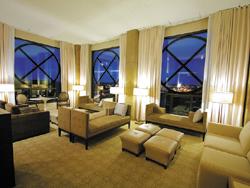Trends in the Hospitality Market - April 2008
By Darius Helm
Last year was probably the strongest year on record for the hospitality market, and 2008 should be another strong growth year. Then, in all likelihood, growth will slow for a couple of years before the refurbishment cycle kicks in.
Much like healthcare, the long term prospects—say, the next 20 or so years—for growth in hospitality are good. Much of it is due to the baby boomers, who will keep business travel healthy for another decade before shifting their focus to leisure travel.
In the shorter term, a slowing economy and weak dollar will continue to impact overseas travel, but as people decide against a trip abroad, many choose instead to take a domestic trip, and they’ll end up spending their money in American hotels and motels. Furthermore, the U.S. is now a bargain for foreign travelers to visit, further boosting the market.
Data suggests that the larger hotel companies have passed the peak of their investment cycle, and even though the pipeline is still flowing strong, a year from now the market will probably slow.
Most of the recent growth has been at the high end of the market, which over the last few years has become a whole new experience, both in the U.S. and in various markets abroad. Luxury hotels offer so much to the traveler in entertainment, shopping and personal services and amenities that in a way the hotel itself becomes the destination.
In an interesting parallel, the assisted living market is also developing into a societal locus. Many of the new continuing care retirement communities offer a range of amenities similar to the luxury hotels, with retail shops, restaurants, fitness centers, and even educational options. And in terms of décor, the designs are similar to traditional hospitality looks, so they often end up being served by the hospitality divisions of carpet mills and other suppliers.
In the fight for share, hotel companies have revamped their traditional brands and created new ones to appeal to the Gen X and Gen Y traveler, with hip design and hi-tech features like wi-fi and check-in kiosks. Boutique hotels, with sophisticated styling that is quieter than traditional hotels yet often more luxurious, have been developed by many of the major brands, as well as by smaller independent operators.
Also strong is the limited service side of the market, places like the Fairfield Inn or the Holiday Inn, that offer many basic amenities but few luxuries.
For the full story including Manufacturer Highlights, see the April 2008 issue of Floor Focus Magazine.
Copyright 2008 Floor Focus
